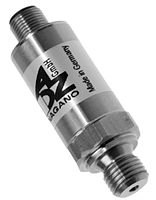
Photo from wikipedia
DOI: 10.1002/adom.202000678 this technology is the requirement of precise and reliable vacuum measurements. The advances in the field come along with harder requirements to meet in terms of precision and… Click to show full abstract
DOI: 10.1002/adom.202000678 this technology is the requirement of precise and reliable vacuum measurements. The advances in the field come along with harder requirements to meet in terms of precision and miniaturization of the sensors.[3] Vacuum gauges currently used are based on mechanical deformation,[4,5] thermal conductivity[6–8] such as Pirani,[9] thermocouple or thermistor gauges; ionization[10,11] and spinning rotations.[12] All these approaches are more or less suitable depending on the pressure range of the measurements. But for all ranges, the vacuum gauges based on the previous parameters have an uncertainty from around 1% to 20%. Another approach to measure vacuum that has been barely investigated is the use of optical sensor. Up to date, the only researches following this approach were based on heterodyne[13,14] and optical fiber interferometry,[15,16] resonance effects[17–19] or magneto-optical trapping.[2] Furthermore, luminescent materials play an important role as phosphors, contrast agent, labels, optical heaters/coolers, temperature and pressure sensors, etc.[20,21] In the field of luminescent materials, the lanthanide based organic and inorganic compounds are of special importance. This is mostly due to their favorable optical properties, such as multicolor emission and up-conversion luminescence, narrow absorption and emission bands, large Stokes shift, long radiative lifetimes, etc.[22–24] Recently, in our previous publication,[21] we showed for the first time the possibility of converting luminescence thermometer into the optical vacuum sensor. To present this Glass microspheres embedded with Nd3+-doped nanoperovskites based on yttrium orthoaluminate are synthesized and used as optical vacuum sensor. Under 532 nm excitation, the microspheres show two emission bands centered at 820 and 890 nm, corresponding to the H9/2,F5/2 → I9/2 and F3/2 → I9/2 transitions. When the microspheres are heated by laser excitation in air (ambient conditions), the positions of the Stark level transitions shift toward red or blue spectral regions. Additionally, the full width at half maximum of these peaks increases. Furthermore, due to the specific geometry of the microspheres, it is possible to trap the emitted light inside the microsphere resonator, in the form of whispering-gallery-modes (WGM). When the microspheres are heated, these resonant modes present higher shifts toward lower energies than those for the Stark levels. As pressure decreases, the thermal exchange (convection process) between the microsphere and the surrounding air molecules decreases, which leads to an increase on the temperature of the microsphere. Based on this effect, the response of the WGM spectral positions as a function of pressure level is used to calibrate the luminescent microspheres as optical vacuum sensors. Relative sensitivity and limit of detection are obtained and compared with other optical vacuum sensors.
Journal Title: Advanced Optical Materials
Year Published: 2020
Link to full text (if available)
Share on Social Media: Sign Up to like & get
recommendations!